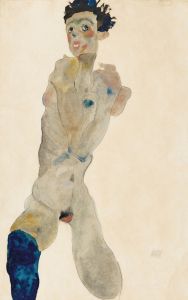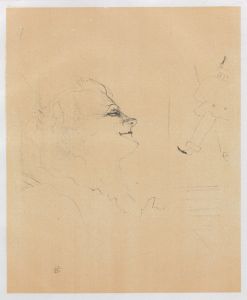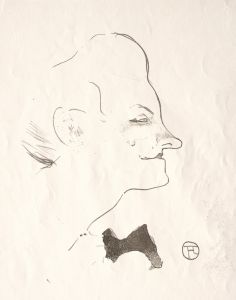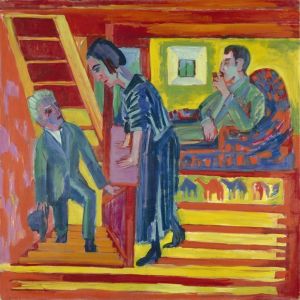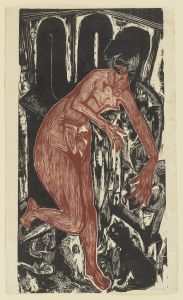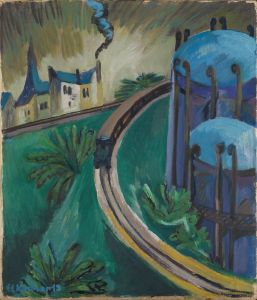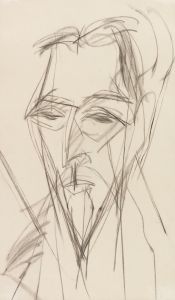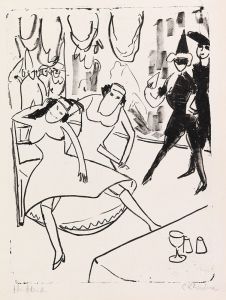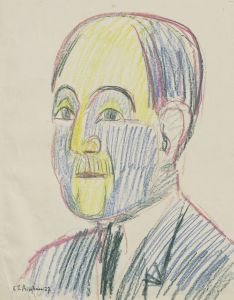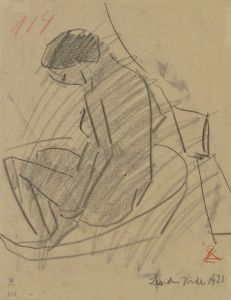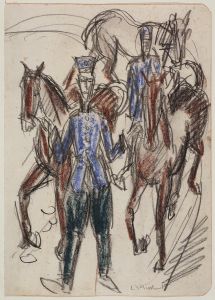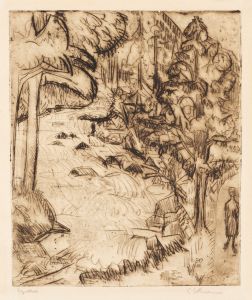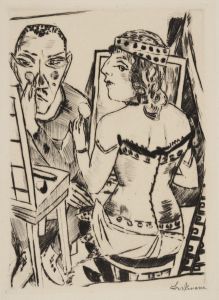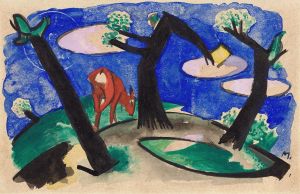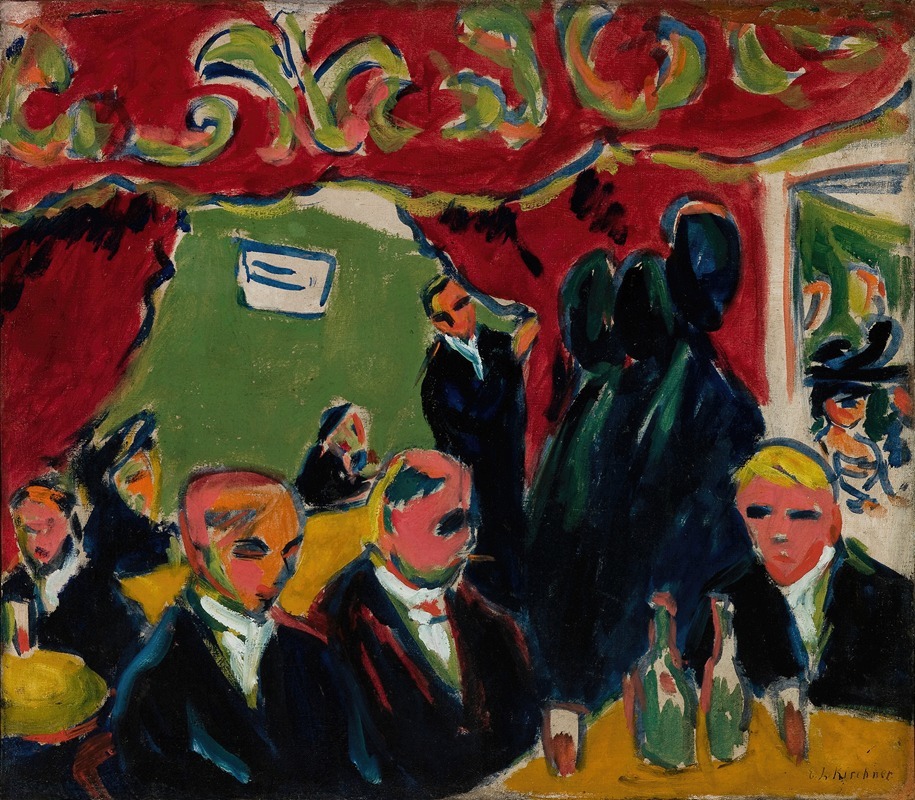
Tavern
A hand-painted replica of Ernst Ludwig Kirchner’s masterpiece Tavern, meticulously crafted by professional artists to capture the true essence of the original. Each piece is created with museum-quality canvas and rare mineral pigments, carefully painted by experienced artists with delicate brushstrokes and rich, layered colors to perfectly recreate the texture of the original artwork. Unlike machine-printed reproductions, this hand-painted version brings the painting to life, infused with the artist’s emotions and skill in every stroke. Whether for personal collection or home decoration, it instantly elevates the artistic atmosphere of any space.
Ernst Ludwig Kirchner was a prominent German expressionist painter and one of the founding members of the artist group Die Brücke (The Bridge), which played a pivotal role in the development of modern art in the early 20th century. Kirchner's work is characterized by its bold use of color, dynamic compositions, and a focus on the human figure, often exploring themes of modern urban life and psychological tension.
"Tavern" by Ernst Ludwig Kirchner is one of his notable works that exemplifies his expressionist style. Although specific details about the painting "Tavern" are limited, Kirchner's body of work during the period when he was active provides context for understanding the themes and techniques he employed.
Kirchner was deeply influenced by the rapid changes in society and the urban environment of the early 1900s. His paintings often depict scenes of city life, nightlife, and social gatherings, capturing the vibrancy and sometimes the alienation of modern existence. The setting of a tavern would have provided Kirchner with a rich subject for exploring human interaction and the atmosphere of leisure and escape from the bustling city life.
In his works, Kirchner frequently used exaggerated forms and distorted perspectives to convey emotion and movement. His brushwork is typically vigorous, and his use of color is both expressive and symbolic, often employing non-naturalistic hues to evoke mood and psychological depth. These elements are likely present in "Tavern," reflecting Kirchner's interest in capturing the essence of a scene rather than a realistic portrayal.
Kirchner's art was also influenced by non-European cultures, particularly African and Oceanic art, which he admired for its perceived authenticity and emotional directness. This influence is evident in his simplified forms and the raw energy of his compositions. The expressionist movement, to which Kirchner was central, sought to break away from traditional artistic conventions and express the inner experiences of the artist, often in response to the anxieties of modern life.
During his career, Kirchner faced numerous challenges, including the trauma of World War I and the subsequent political and social upheavals in Germany. His work was labeled as "degenerate" by the Nazi regime, and many of his paintings were confiscated. Despite these difficulties, Kirchner continued to produce art that was innovative and influential.
While specific information about the painting "Tavern" is scarce, understanding Kirchner's broader artistic context provides insight into what this work might represent. It likely captures a moment of social interaction, imbued with the emotional intensity and stylistic innovation that characterize Kirchner's oeuvre. His work remains significant for its contribution to the expressionist movement and its exploration of the complexities of modern life.





